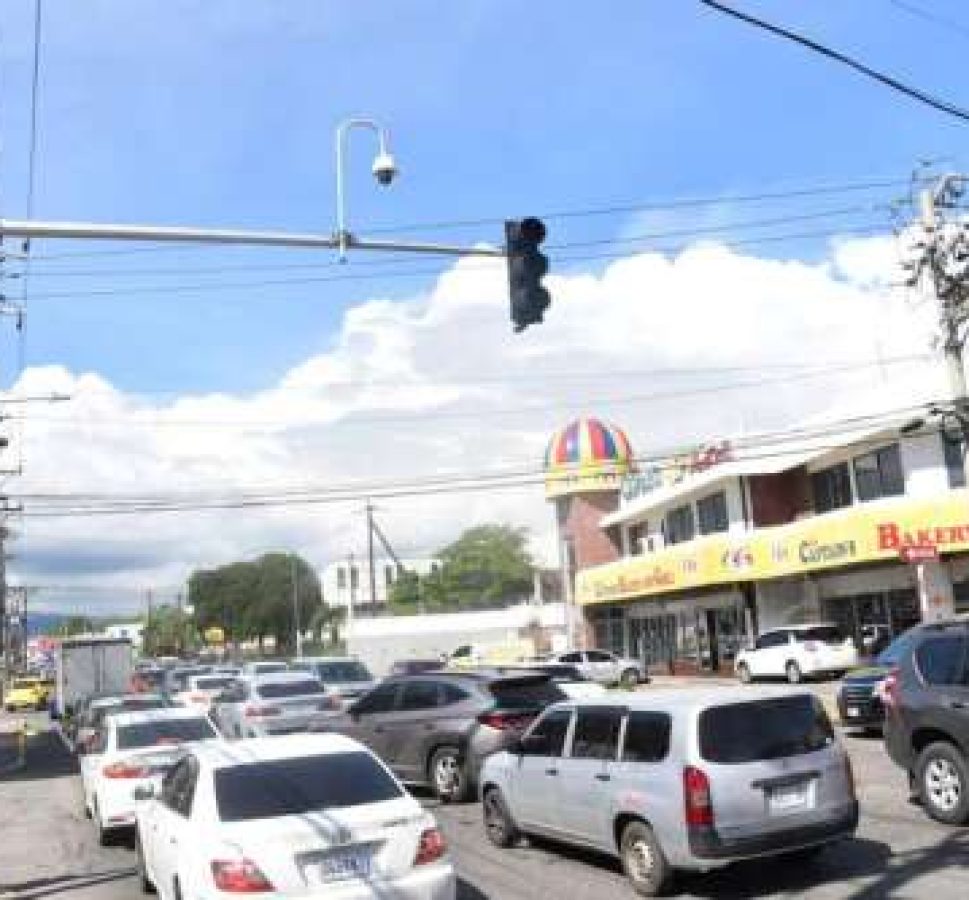
THE constabulary’s Public Safety and Traffic Enforcement Branch (PSTEB) says it will formalise a proposal to prevent the type of congestion seen on some of the nation’s streets Monday, after schools and businesses closed almost simultaneously following the 5.6-magnitude earthquake.
“Instead of having everybody leaving at the same time and bundling, causing a lot of congestion, we might have to come up with a kind of system and response where we can have layers of people moving, or we may have to have some people being domiciled, or we might have to have people being transported from certain points,” Assistant Commissioner Gary McKenzie told the Jamaica Observer on Tuesday after a review of PSTEB’s operations in relation to the post-earthquake traffic snarls in main towns across the island.
He said one other solution the police are contemplating is “an emergency reordering of the transportation routes”.
“That kind of thing, I believe, we will have to look at. However as police officers on the ground, once we see these things happening — for example where routes need to be reordered — we do it on the ground but I believe that this is something that should be promulgated as a part of the system of what can and should be done to ensure that people can be moved efficiently,” McKenzie said.
Monday’s magnitude-5.6 earthquake, which primarily rattled east coast parishes, forced evacuations, knocked out power, and resulted in some businesses and schools shuttering early. Chaotic scenes dotted roads in the Corporate Area during the early afternoon as scores of students and workers headed home, resulting in gridlocks that lasted hours.
The PSTEB head said Monday’s experience proved that several issues are in urgent need of fixing.
“It brings into sharp focus how we have to operate as a country. In some instances persons were moving in a panicked manner, and that is something that has to be treated differently from a societal perspective where persons understand how we have to go about dealing with instances like these. That has to be important in terms of communication, training from a community and institutional level,” McKenzie pointed out.
“It is not a police issue alone. People need to be trained, people need to be sensitised so [that] within homes, workplaces and communities we need to have persons understand that these things will happen, and when they happen what is the best thing to do,” he noted in reference to the display of indiscipline observed amongst motorists. According to the PSTEB head, had it not been for the presence of the police there could have been other types of disasters.
“Persons, whilst they were moving out in some instances, they were disobeying road signs and traffic lights and they were driving in a manner that was inappropriate. And in a lot of instances it was the presence of the police that prevented catastrophes on the roadways so we had to move police officers to be at these intersections, directing and controlling traffic as well as to assist traffic out of, especially, the township,” he said.
The assistant commissioner of police said PSTEB also pulled out all the stops where technology was concerned in order to assist Jamaicans to get to their destinations on Monday.
“We monitored our surveillance cameras through JamaicaEye and also monitored our social media platforms so that wherever the complaints were in terms of traffic delays, we were able to respond and go there. So because of that we learnt about the need to be prepared to respond quickly, to monitor our surveillance systems, and of course to interface with other agencies — because we had to do that,” he told the Observer.
“We are very happy that, coming out of the whole thing, there were no catastrophes in terms of persons dying; and where we could, we were able to divert traffic; and where roads were blocked, the alternatives were mentioned and persons were able to get home,” McKenzie added.
He, in the meantime, maintained that PSTEB was neither overwhelmed nor slow on the draw in reacting after the earthquake.
“We were not overwhelmed. I will not say we had unlimited resources and [that] we did not want to place officers at every intersection but [still] I believe that we acquitted ourselves sufficiently well. One of the good things that happened is we knew there would be a rush on the roadways, and that didn’t happen until half an hour into an hour after so we were able to position as best as we could at certain points, and as a result of that I think we were able to respond reasonably well,” McKenzie emphasised. He said PSTEB was also proactive in calling forward personnel who had been rostered for later shifts and also pulling administrative personnel for other roles.
While unable to say the number of infractions which occurred or motorists ticketed, the PSTEB head said, “there were some infractions that had to be noted, and I know we had follow-up prosecutions because there were some things we can’t just ignore — but for the 99 per cent of the time it was really to get persons moving to their destinations”.
PSTEB, which has the role of improving the safety of citizens and maintaining public order, comprises the Public Safety Division, Highway and Safety Patrol Division, and the Traffic Enforcement Division.






